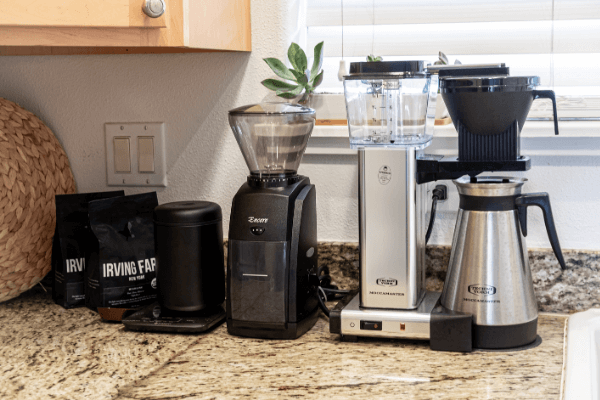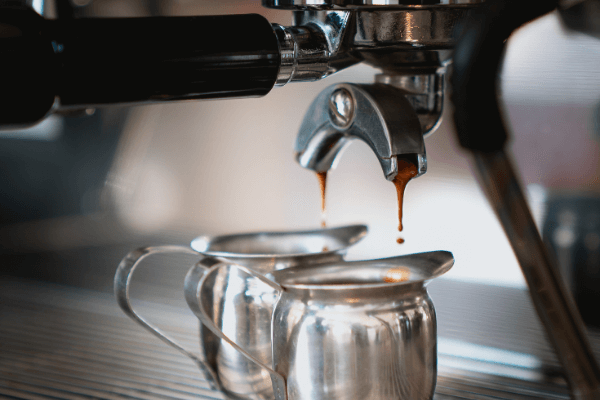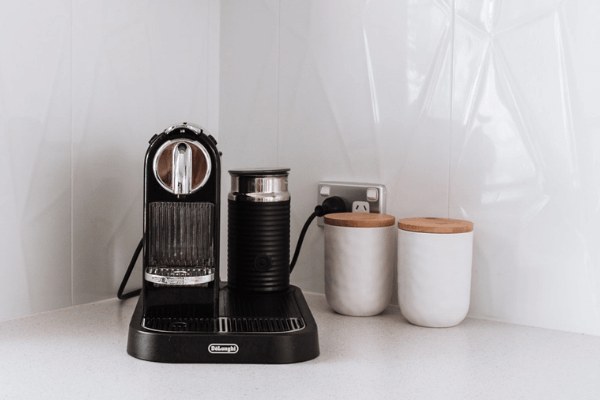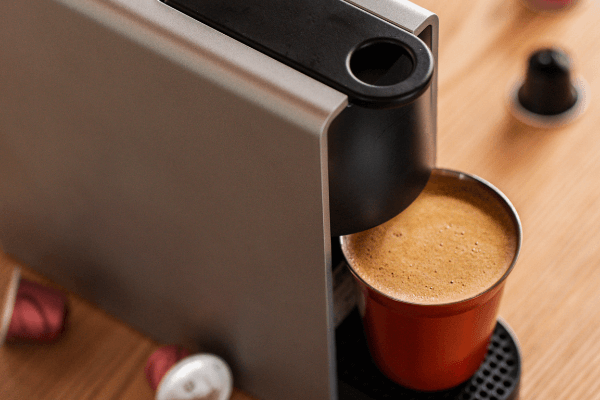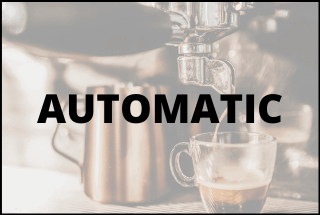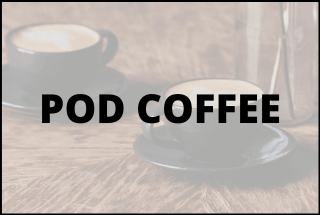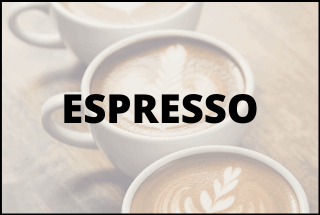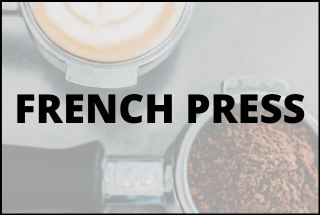The Best Home Coffee Machines in 2023
— Buyers Guide, Reviews, and Comparisons
Coffee is one of the most popular drinks in the world and according to a report by Gimoka Coffee, we get through a whopping 400 billion cups consumed each year. If that figure was split between every single human on earth, we would each get around 50 cups.
That’s a lot of coffee, but our appetite for the bean is high, so it’s only natural that home coffee makers are enduringly popular. Accordingly, there are myriad options and types available.
Choosing the right one is no simple task. First, you have to consider what you’re hoping to get out of it, beyond joe of course.
Luckily, we’re here to help. Below, we highlight the best home coffee machines according to their type, from moka pot to espresso machine and everything in between.
When selecting the device to meet your needs, consider the following:
- Functionality and versatility
- Value for money
- Size and build
- Style and aesthetic
- Brewing method and ease of use
Our Top Picks
| IMAGE | PRODUCT | DETAILS | ||
|---|---|---|---|---|
Best Automatic 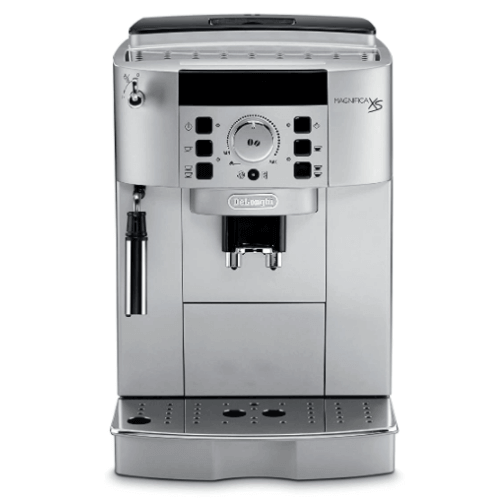 | Best Automatic |
Features
| Check Price At Amazon ECAM22110SB Review | |
Best Pod Coffee Maker 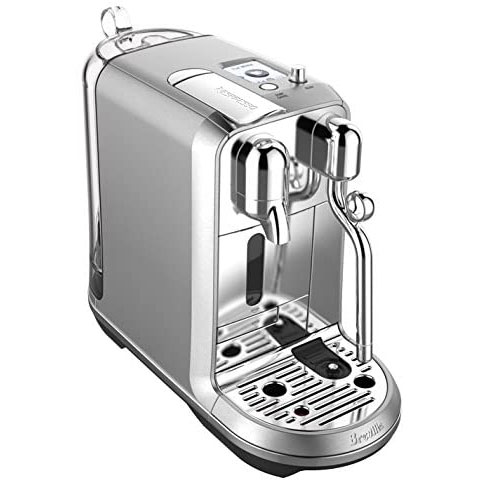 | Best Pod Coffee Maker |
Features
| Check Price At Amazon Creatista Plus Review | |
Best Espresso Machine 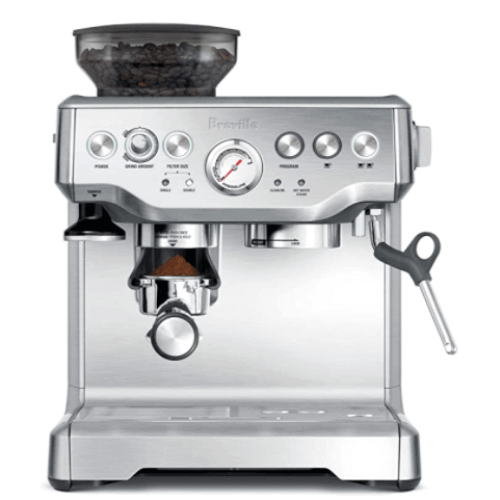 | Best Espresso Machine |
Features
| Check Price At Amazon Barista Express Review | |
Best Drip Coffee Maker  | Best Drip Coffee Maker |
Features
| Check Price At Amazon Cuisinart DCC-3200 Review | |
Best Cold Brewer  | Best Cold Brewer |
Features
| Check Price At Amazon Takeya Cold Brew Review | |
Best French Press 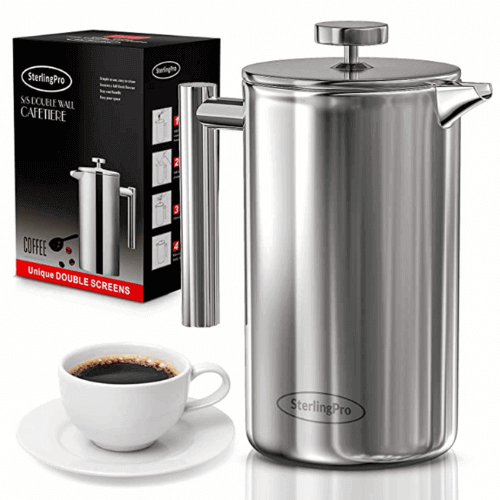 | Best French Press |
Features
| Check Price At Amazon SterlingPro Review | |
Best Moka Pot 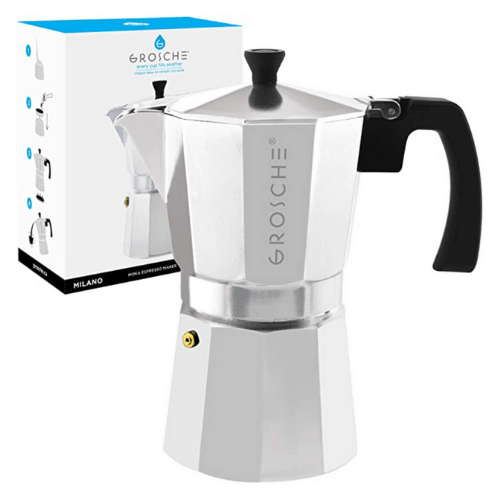 | Best Moka Pot |
Features
| Check Price At Amazon GROSCHE Milano Review | |
Best Portable  | Best Portable |
Features
| Check Price At Amazon Aeropress Review |
A Buying Guide to the Best Home Coffee Machines
Home coffee machines are often marketed as “one size fits all” devices, but this is incorrect. No two coffee makers are the same, and making the right decision about which is for you requires more research than retailers let on.
Put it this way: when you go to a cafe, you’re at full liberty to pick and choose whatever you’re in the mood for. Maybe today you want espresso and tomorrow you’ll prefer an iced coffee.
At home, it’s different because you’ve committed to the coffee machine’s functionalities and limitations.
Fortunately, there are a ton of home coffee makers and types to choose from, and these can be broadly categorized by the type of coffee they produce. And selecting a type is largely a matter of figuring out what kind of bean addict you are.
For example, if you’re usually in a hurry when you’re making coffee, you may want to focus on the automatic, pod, or portable coffee makers. For those interested in the art of coffee, a cold brewer or home espresso machine is a good place to start. Traditional enthusiasts can take their pick of drip makers, French presses, and moka pots.
But what if you simply don’t know where to start? Don’t worry, I’ve got you. This guide will help you determine the best home coffee machine for your lifestyle.
First though, a top tip: coffee machines wildly, but those intended for home use should have a few key qualities in common:
Compactness
Ease of operation
Durability
Intuitiveness
Value for money
Solid manufacturer’s reputation
Types of Home Coffee Machines
Depending on who you ask, there are as many as 16 distinct types of coffee makers. However, I’ve noticed that many of these encompass other types. For example, some consider a thermal coffee maker to be a standalone machine, but on a technical level, it’s a drip coffee maker. The only difference between the two is that one comes with a thermal carafe and one does not.
So, to keep things simple, I’ve categorized my picks of the best home coffee machines by how they will fit into your lifestyle. Have a read of each one to better determine which coffee machine to buy.
Traditional Home Coffee Makers
Think of these as standard home coffee machines. You wouldn’t look twice if you stumbled upon one in someone’s home, and operating them is as straightforward as it gets. Pick one of these if you’d like excellent coffee made easy.
French Press Coffee Makers
Multiple accounts imply that the French press — though not the first-ever coffee maker — is what paved the way to modern brewing. They’re a hit because of how easy they are to use: add grounds, add hot water, leave to steep for a moment, plunge, and voila!
French press coffee makers are affordable, compact, and require very little maintenance. So if you’d like to get to the point in your brewing, it’s an excellent starter choice.
Inexpensive
Ease of use
Compact, and easy to maintain
Moka Pots
Here’s one for those who like their coffee bold and intense. Moka pots operate similarly to espresso makers, by applying heat and pressure to brew. While the latter requires complex machinery, Moka pots are simple stovetop brewers that anyone can easily get the hang of. Consider one if you’re looking for an inexpensive way to brew specialty coffee without the hassle.
Brew stronger coffee
Little learning curve
Compact and portable
Drip Coffee Makers
Drip coffee makers are probably the first to come to mind when thinking of home coffee machines. They’re the original, and to many, the best. If you’re interested in pour-over coffee but would prefer an electric way to make it, these are your best bet. Different drip makers offer a variety of features that highlight convenience and ease of use.
Programmable and automatic options available
Best for families, higher capacity than moka pots and French press brewers
Efficient brewing method that’s stood the test of time
Craft Brewers
If you enjoy making coffee as much as you enjoy drinking it, consider taking up craft brewing. Depending on your style, this can be as challenging or creative as you’d like it to be. Go for one of the following if you prefer specialty coffee and would like to give it a shot.
Home Espresso Machines
I won’t lie, these can be intimidating, especially if you’re unfamiliar with their operation. Unlike standard coffee makers, home espresso machines demand precision, and it can take time to learn the ropes. That said, should you rise to the challenge, you’ll never have to leave the house to enjoy espresso again!
Hands-on coffee makers
Choice in automation and programmability
Milk frothers enable coffee art
Cold Brew Coffee Makers
Cold brewing is arguably the healthiest (and easiest) way to brew coffee, but, with a few motorized exceptions, this method is time-consuming, so patience is required. These immersion brewers extract flavor with nothing more than cool water and time. They’re the simplest in operation and design, but the possibilities for craft brewing are endless.
No learning curve
Refrigerated coffee lasts for weeks
Coffee concentrate is versatile and can be used in many things
Modern Coffee Makers
Perhaps you’d like a home coffee maker that does all the work for you? Modern coffee makers are best for enthusiasts who’d like their coffee at the push of a button. Whether you frequently find yourself rushing out the door in the mornings, or simply don’t enjoy manually preparing your joe before you drink it, digital coffee makers emphasize ease of use.
Automatic Coffee Machines
Automatic coffee makers can be whatever you’d like them to be, as the title speaks of their mechanics rather than their brewing method or style. The gist is that, beyond some optimization and setting your cup, automatic coffee makers do all the heavy lifting without human intervention.
Common features include programmable grind size, strength, temperature, auto-off functions, and a programmable timer to have your brew ready to go exactly when you need it.
User-friendly, little learning curve
Timesavers, these devices work faster than most other coffee makers
An array of optimization options
Pod Coffee Machines
Pod coffee makers have made their mark and are now some of the most popular coffee machines in the world. Not only will you get a larger selection of coffee profiles, but there is also zero effort required.
The majority of pod coffee makers are one-touch machines for easier operation. They also rank surprisingly well in terms of eco-friendliness and offer consumers bold coffee that’s akin to authentic espresso.
Wider choice in flavors and coffee styles
Extremely user-friendly
Compact
Portable Coffee Machines
Of course, “portable” isn’t really a style of coffee maker, but rather a label. Still, many people assume that coffee makers are cumbersome, made to be stationed in kitchens or packed away.
Portable coffee makers are growing in popularity, from the compact cold brewers we adore to the Aeropress — our top pick. These coffee makers have many perks: they’re budget options, generally small enough to fit in a handbag or drink holder, and tend to be easier to dismantle and clean.
Reduced specs often mean a lower price point
Compact, lightweight and use little energy, if any
Extra convenient for those on the move
What to Consider When Buying a Home Coffee Machine
It’s tempting, but you shouldn’t buy coffee machines on a whim. See, coffee makers are investments. If you purchase a device that doesn’t work for you, you’ll be stuck with bad coffee — and there is nothing, and I mean nothing, worse than bad coffee.
Beyond their inner workings and the brewing method and type, there are some considerations to keep in mind before you whip out your credit card. It will save you the money you’d otherwise spend on a disappointing coffee maker that doesn’t match your needs.
Before you google “where to get a home coffee machine,” focus on knowing exactly how to spot a good device. The following is what you should look out for regardless of whether you’re shopping online or at a brick-and-mortar store.
Each of our best-rated coffee machines checks these boxes, so if all else fails, pick one of our favorites!
Build and Durability
This is perhaps the most important detail to check before you buy a coffee machine. There’s little point in investing in a brewer if it’s going to break, deteriorate, or stop working a month after you’ve bought it.
Naturally, different coffee makers have different build requirements. There’s a lot of ground to cover here, so I’ll jump right in.
Heat Safe Glass
I shouldn’t have it to say it, but coffee is (usually) steaming hot, so you’ll need a brewer that won’t crack — or worse, burst — at the slightest temperature change. You’ll want to double-check this if your coffee maker has glass components, with emphasis on French press coffee makers and drip coffee carafes.
Borosilicate is the glass of choice for coffee makers. It’s created specifically to withstand heat in labs, so hot water is not an issue.
BPA-Free Plastic
It’s a common misconception that plastic is inferior to glass and stainless steel. When it comes to coffee makers, it’s a perfectly good material. It’s durable, easier to handle, and it cuts costs without compromising quality.
Even so, not all plastics are created equal. The rumors about BPAs — harmful chemicals that plastic releases over time — are true. Since you’re handling drinks with your coffee maker, it’s essential that your plastic parts won’t deteriorate and pollute your coffee with frequent use.
Tritan plastic, as seen in the Takeya cold brewer, is your best bet because it’s safe and extra sturdy, though any BPA-free plastic will do.
Stainless Steel
Last, but certainly not least, is stainless steel. If you can afford a stainless steel coffee maker or one with stainless steel components, I highly recommend it. Stainless steel is the popular choice for a multitude of reasons — it’s durable, easy to maintain, and looks sleek.
Coffee makers with stainless steel parts, or those that are part stainless steel and part glass, cost more. But these will save you money over time because of how hardy the material is. You won’t need to constantly replace your device.
Filter Quality
This won’t apply to all coffee makers (for example, espresso makers don’t rely on filtration), but if your brewer makes use of filters, pay attention to the make of these so you know what you’re getting yourself into.
You don’t need a PhD in coffee filters, but a basic understanding of which filters do what is helpful. Filters can affect how much time and money you spend on maintenance, and also dictate the grinds you can put through them.
Paper or Metal?
I know people who would be deterred by a coffee maker if it used paper filters instead of metal ones. It may sound snobbish, but there is sound logic behind this.
Paper filters out a lot more than metal does, so the resulting coffee will be lighter in intensity. Metal filters don’t account for cafestol — a compound that contributes to coffee’s bitterness. This means that if you use a metal filter, you’ll have bolder, stronger coffee. Keep in mind though, that cafestol can boost your cholesterol, so paper filters are somewhat healthier.
Overall, there are pros and cons to each option. Paper filters are cheaper but you’ll have to continuously replace them. They simplify maintenance, but they’re not great for the environment. And while they’re perfect for pre-ground coffee, they’re no good if you’re hoping to brew freshly ground beans.
Metal filters are reusable but have a higher initial cost. You’ll also have to maintain them frequently, which can be dull work. They’re much better for the Earth, but as mentioned, they may not be the healthy choice. And, of course, if you don’t like intense coffee, you probably won’t enjoy the fruits of a metal filter’s labor.
Capability and Capacity
A straightforward but often overlooked factor. How much coffee are you planning to make with your brewer? Some of the best value coffee machines are such because they’re single-serve brewers. They’re great if you’re the only coffee drinker at home, for instance, may not serve large families well.
On the other hand, heavy-duty home coffee machines — some of which make as much as 14 cups per brew — are overkill for a single person or couple living alone. There’s also a chance that high-capacity brewers will use more energy and ultimately cost you more money.
You should also consider what your coffee maker can and cannot do. Cold brewers are extremely versatile, and you can make an array of craft drinks with one single device. Espresso makers are usually equipped with frothing arms for latte art. But a cold brewer can’t make espresso, and an espresso machine can’t turn out cold brew.
Make sure you understand your machine’s capabilities to prevent disappointment later.
Size and Weight
Unless you’d like to unpack and set up your home coffee machine every time you use it, make sure that its dimensions suit your counters. Likewise, if you move around a lot and can’t bear the thought of leaving your brewer behind, compactness and portability are a priority.
Size and weight won’t truly affect the operation of your coffee maker. French press brewers, for example, are tiny little guys that make some of the best coffee known to man. Still, some machines will be larger than others. Espresso machines have more components and so take up more room. Drip machines tend to be larger on account of their carafes.
If you’re interested in compact brewers, our coffee machine reviews for French presses, pod coffee machines, cold brewers, and portable brewers will get you started.
Aesthetic
They say not to judge a book by its cover, and I agree, but let’s face it, only the prettiest books make it to our coffee tables. Still, a coffee machine that looks great won’t necessarily function well, so don’t base your purchase on aesthetics alone, but there’s nothing wrong with choosing an excellent machine you love to look at too!
May I recommend the Cuisinart DCC-3200CP, our favorite drip coffee maker? It’s sleek and comes in a range of nine different colors!
Brand and Customer Feedback
Speaking of Cuisinart, a highly rated manufacturer, you should certainly take reputation, buyer feedback, and coffee machine ratings into account.
This is not to say that you shouldn’t give smaller companies a chance, or that you should focus on high-end, 5-star models only. But if a coffee maker has no bite to back up its bark — no reviews, no manufacturer track record, and no (or low) ratings — the chances are it’s not a good coffee machine.
Remember, we solely do coffee machine reviews here. So, if you don’t fancy scouring the internet to find what you’re looking for, stick with us!
Maintenance
I’ve said it before and I’ll say it again: we enjoy drinking coffee, not cleaning up after we’ve made the coffee. If, like me, you hate chores, make sure that your home coffee machine doesn’t demand extra time and energy in upkeep.
Pod coffee machines are the top choice for lazy people because there’s almost no maintenance required. The pods are disposable and the machines only need descaling every three months.
Generally speaking, the fewer components a coffee machine has the less upkeep it requires. If you find a brewer with dishwasher-safe parts, you’ll save effort keeping it clean. And don’t forget that paper filters have to be constantly replaced — adding to the time spent fussing over your coffee maker.
Nice-to-Have Features
Perhaps you’re searching for the best value coffee machine on the market. While I can’t specify an exact model because everyone likes different types of coffee, I can give you a couple of pointers.
Here are some things that won’t make or break a worthy model, but are great to have regardless.
Cool Features
This depends on the type of your machine of course, but some coffee makers are simply better equipped than others.
One example is water level markings on carafes. Not every model will have them, but they make such a difference in your brewing, especially if you’re doing so manually and hope to accurately gauge your coffee to water ratio.
Other handy features include removable reservoirs and spill trays, used pod compartments in pod brewers, warming trays, and ergonomic (or heat-resistant) handles and non-slip bases.
Included Accessories
Who doesn’t love free things? Many coffee machine manufacturers throw in freebies with your purchase. These can be anything from a set of filters or coffee samples, to coffee tampers or separate milk frothers. Apply the golden rule here: the more the merrier!
Good Warranty
If you follow my advice and choose a proven manufacturer, this shouldn’t be a problem at all, but you should still double-check to make sure you won’t draw the short end of the warranty stick.
Some coffee makers come with warranties valid for up to five years. It’s rare, but it’s possible. Do your research!
Low Energy Rating
A wise man once told me: “if it changes the temperature of something, it will drain your electricity.” He was right. Kettles, fridges, fans, and stoves are notorious for pushing our power bills up, and unfortunately, coffee makers are just as guilty.
This obviously doesn’t apply to manual brewers, but for electric machines, energy should be taken into account.
The good news is that automatic brewers are generally fantastic in terms of energy consumption. Plus, many have an auto-off feature to ensure you don’t waste power, even if you forget to turn your machine off.
Price
Last, but not least, let’s talk about coffee machine prices.
This is purely subjective, but as a rule, the greater the value for money, the more you should consider buying the machine. There’s absolutely no point in spending $100 on a moka pot, for instance, if a $30 model does the job just as well.
On the other hand, even though it’s tempting, a home espresso maker that costs $150 dollars, but does not include any espresso-making tools or accessories, isn’t a wise choice.
Coffee makers span a broad spectrum when it comes to cost. You can get a decent but budget cold brewer for under $20 or a high-end espresso machine for $1000.
With that in mind, it’s best to focus on whether or not the coffee machine’s price is justified. A thousand-dollar French press is not. A thousand dollar, fully equipped, automatic espresso maker could very well be.
But don’t worry, our recommendations in this article are all worthy of their respective price tags.
Conclusion
I bet you didn’t realize how much goes into choosing the best coffee machines. As with any other product, research is important. Since home coffee makers is such a wide field, there are a lot of thorns to sift through to find the roses, and the more you know, the less chance you’ll prick yourself in your quest for top-notch joe.
Overall, the best home coffee machines offer excellent value for money, are built to last, and are simple enough that anyone can use them. They may not have the scale of industrial machines, but they don’t lack efficiency at all.
Above all else, home coffee machines are convenient as they eliminate the need for (and money spent at) cafes while making joe that’s just as excellent.
But what matters most is what you’re looking to use it for. There is a multitude of homebrewers to choose from — from simple moka pots to complex espresso makers.
Whether you’re looking for a quick cuppa in the morning without any physical intervention or hoping to try your hand at craft coffee, there’s something for everyone.
Home Coffee Machines FAQs
What Is the Best Coffee Machine for Home Use?
This entirely depends on your preferences and what you will use your home coffee machine for. Our top picks are categorized according to functionality, so if you’re in need of a starting square, check them out. We also have a wide selection of individual coffee machine reviews for you to enjoy.
What Else Can You Use A Home Coffee Machine For?
Here’s the thing: electric coffee makers are coffee makers, and unless the manufacturer explicitly states that it’s a multipurpose brewer, you shouldn’t try to brew anything else in your device. Using it in ways other than as intended may damage or break your machine, and void your warranty.
That said, there are many life hacks floating around claiming that so long as your machine boils water, it can boil anything — from tea to ramen.
Note that some pod coffee manufacturers produce tea and cocoa pods for use with your machine, while simpler devices, like cold brewers, are honestly just containers that won’t break if you use them for other drinks, like iced tea.
How Long Can You Leave Water To Stand In A Home Coffee Machine?
You don’t have to refresh your water after every use, but as often as possible is recommended, with the upper limit believed to be three days maximum. Longer than this and your reservoir will begin to harbor bacteria.
Do Home Coffee Machines Boil Water?
Not exactly. Most home coffee makers heat water to 205 degrees Fahrenheit, which is not hot enough to boil water, for that you need 212 degrees Fahrenheit.
When Should I Replace My Home Coffee Machine?
The simplest answer is to replace it when it stops brewing coffee efficiently. Unlike smartphones, you don’t have to upgrade at the beginning of every season. That said, the average lifespan of a coffee maker is five years.
Where Can I Buy A Home Coffee Machine?
People always ask me for more info on how and where to buy a coffee machine, and all I can say is that there are a few options, so my advice is to go with what’s easiest for you.
Amazon is an excellent and trusted online retailer, or you can buy directly from manufacturer websites. If you’re looking to buy a second-hand model directly from an individual online, hold the seller to the same standard that you would a new (or little known) manufacturer — look for good ratings and verified feedback.
If all else fails, visit a physical retailer. It might help to see your favorite coffee makers in person, as the opportunity for a surprise (or disappointment) is decreased, if not eliminated.
Where Can I Buy Coffee Machine Replacement Parts? Where Can I Get A Coffee Machine Repaired?
Speaking of where to buy coffee machines, if yours has a lot of components, you’ll have to research how easy it is to find replacements if needed.
The good news is that if online retailers stock coffee machines, there’s every chance that they’ll stock coffee machine parts and accessories as well.
Brick and mortar lifestyle stores may not stock everything, but they’re worth checking out. And you could always visit a specialist store or factory shop if you can’t find what you’re looking for.
In terms of repairs, you’ll have to look up who’s qualified and available near you. The easiest way to do this is to search online for coffee maker repairs. Keep in mind, sometimes it’s not worth it and you’ll be better off replacing the machine with a new one.
Do Home Coffee Machines Purify Water?
Not inherently. As a standard, coffee makers heat or hold water. Their filters are for coffee grounds only. That said, there are few higher-end models that include water filters as an extra, and if you prefer, you could always add a water filter to your machine if the design allows.
Otherwise, simply add pre-filtered water to your reservoir. It’s a great trick that will enhance your coffee’s profile.



